It looks like you're using an Ad Blocker.
Please white-list or disable AboveTopSecret.com in your ad-blocking tool.
Thank you.
Some features of ATS will be disabled while you continue to use an ad-blocker.
share:
a reply to: MissVocalcord
Alright, well this is all a side topic, to discuss digital image formatting in general, but others have presented it and I'd like to learn more about it.
But so people are assuming terrible jpg compression and artifacts with the situation of the Moon Hut original image at space.com and the Chinese site.
Just recently in the other thread, we were looking at NASA's Mars images in JPG format, and thank you for quoting from that thread:
^So that just established recently, in that other thread, that JPG format can be used as "essentially lossless."
Alright so NASA is using "essentially lossless" JPG format, which seemingly validates the format.
Now we have this situation with the Mystery Hut images, and suddenly people are assuming terrible JPG compression & artifacts.
Just a few days after the other thread validated JPG format as capable of being "essentially lossless," a few days later people are assuming terrible JPG degradation with these Moon Hut images.
Guys what can I say. The same people that validated JPG's potential as lossless, the same folks are here assuming terrible JPG degradation. After just establishing that it doesn't need to do that.
Then we had a mod posting general info about compression, which isn't really relevant to anything, we're discussing 2 specific images, not just general info, haha.
I don't really know where to go from here, haha.
But we can't just assume an explanation without adequate proof.
The fact is that the two images don't match, but the Chinese site could have just changed their image. That's at least just as possible as the assumptions about space.com destroying the image.
I posted all the images' data too, it seems an absurd situation to take the tiny small png and compress it / destroy it, then blow it up twice its file size, I don't think the basic situation makes sense there.
Alright, well this is all a side topic, to discuss digital image formatting in general, but others have presented it and I'd like to learn more about it.
But so people are assuming terrible jpg compression and artifacts with the situation of the Moon Hut original image at space.com and the Chinese site.
Just recently in the other thread, we were looking at NASA's Mars images in JPG format, and thank you for quoting from that thread:
The amount of JPEG compression can be changed from essentially lossless to very lossy.
^So that just established recently, in that other thread, that JPG format can be used as "essentially lossless."
Alright so NASA is using "essentially lossless" JPG format, which seemingly validates the format.
Now we have this situation with the Mystery Hut images, and suddenly people are assuming terrible JPG compression & artifacts.
Just a few days after the other thread validated JPG format as capable of being "essentially lossless," a few days later people are assuming terrible JPG degradation with these Moon Hut images.
Guys what can I say. The same people that validated JPG's potential as lossless, the same folks are here assuming terrible JPG degradation. After just establishing that it doesn't need to do that.
Then we had a mod posting general info about compression, which isn't really relevant to anything, we're discussing 2 specific images, not just general info, haha.
I don't really know where to go from here, haha.
But we can't just assume an explanation without adequate proof.
The fact is that the two images don't match, but the Chinese site could have just changed their image. That's at least just as possible as the assumptions about space.com destroying the image.
I posted all the images' data too, it seems an absurd situation to take the tiny small png and compress it / destroy it, then blow it up twice its file size, I don't think the basic situation makes sense there.
Just to recap, here are the two Moon Hut images we're focused on:
This is the giant jpg from space.com:
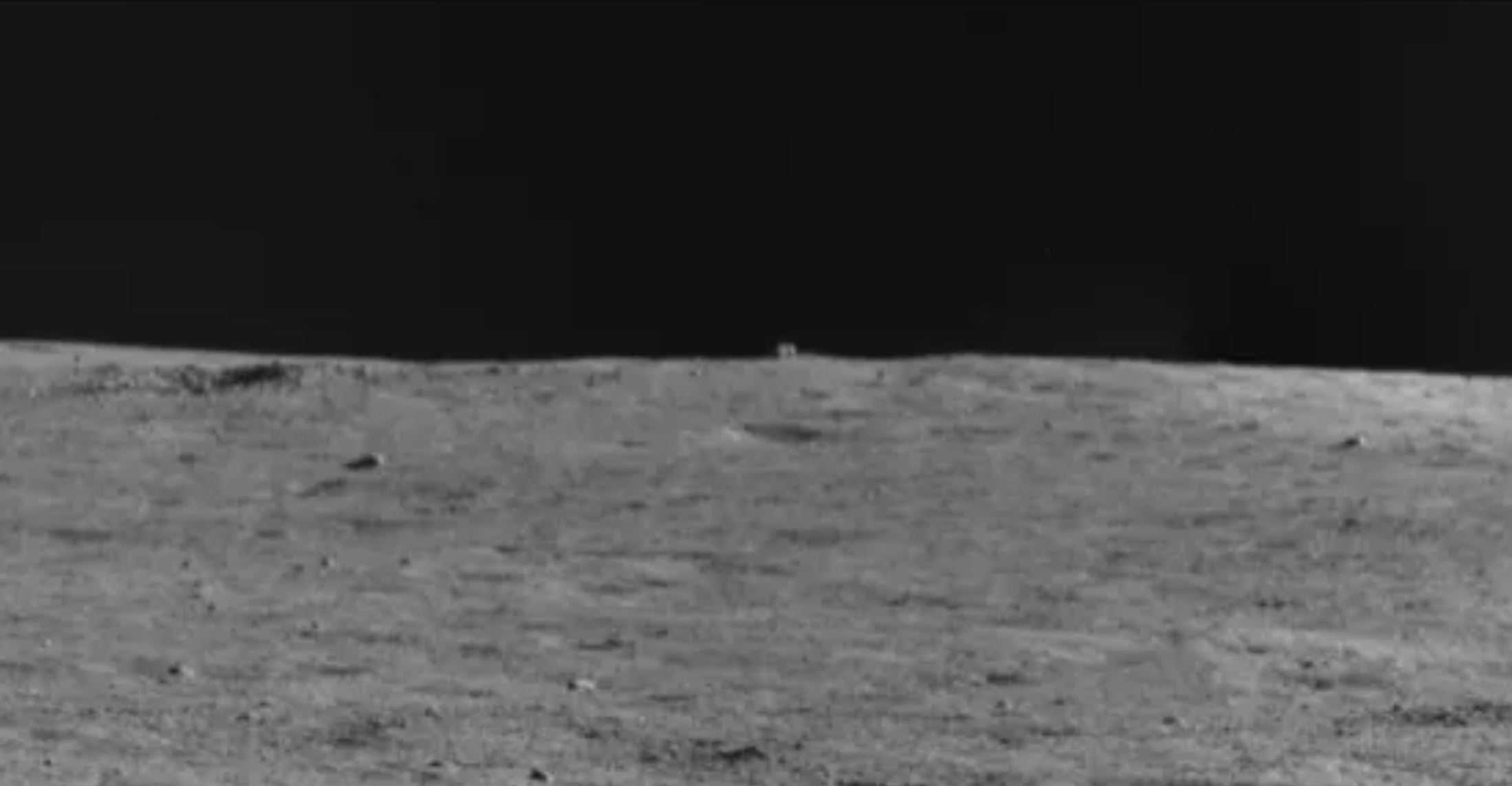
Space.com sources the Chinese site for its image. But it was pointed out recently, that the images don't match; the Chinese site has a very small png, half the file size of the giant jpg.
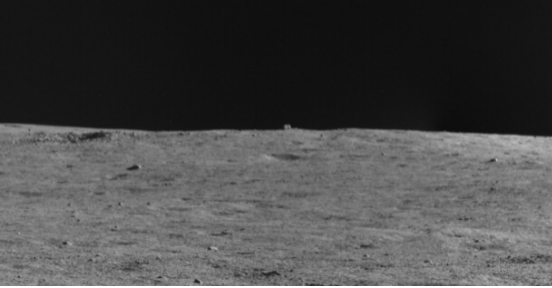
It's essentially a nonsensical sequence of events to assume that the very small png was compressed & degraded, only to blow it up twice its file size as a jpg, and they didn't need to do anything at all, they could have just saved the png exactly.
In fact, I just embedded the png without changing it, there's no need to do anything with it, let alone compress it and degrade it to hell, then blow it up twice the size of the original. That's nonsensical.
Of the two possible explanations, there's that nutcase sequence of nonsensical events, accusing space.com of essentially destroying the image.
Or. The Chinese site simply changed the image. It's a much more sensible idea.
Anyways, if we want to assume what space.com did between the two images, we have the real-size images right here in this post, I'd expect people could look at these images, and consider the two possible explanations for why they don't match.
We can't just make blind assumptions about what happened. And then get lost talking about general information haha.
This is the giant jpg from space.com:

Space.com sources the Chinese site for its image. But it was pointed out recently, that the images don't match; the Chinese site has a very small png, half the file size of the giant jpg.

It's essentially a nonsensical sequence of events to assume that the very small png was compressed & degraded, only to blow it up twice its file size as a jpg, and they didn't need to do anything at all, they could have just saved the png exactly.
In fact, I just embedded the png without changing it, there's no need to do anything with it, let alone compress it and degrade it to hell, then blow it up twice the size of the original. That's nonsensical.
Of the two possible explanations, there's that nutcase sequence of nonsensical events, accusing space.com of essentially destroying the image.
Or. The Chinese site simply changed the image. It's a much more sensible idea.
Anyways, if we want to assume what space.com did between the two images, we have the real-size images right here in this post, I'd expect people could look at these images, and consider the two possible explanations for why they don't match.
We can't just make blind assumptions about what happened. And then get lost talking about general information haha.
originally posted by: JamesChessman
Everyone knows that compression creates artifacts.
That's not correct, some compression methods create artefacts, the best known example being the method used by JPEG. The method used by PNG does not create artefacts.
It's POSSIBLE that space.com destroyed the image with their own compression. Yes it's obviously possible but it's not established that that is what really happened.
Only they know what they did, speculating about it will not get us anywhere.
It also does not seem possible that a reputable website / journal, space.com, would destroy their image that they're reporting on. In terms of professionalism and respect for their own content that they're reporting. It's PHYSICALLY possible that they did so, it's just professionally very unlikely. We're basically accusing them of destroying China's original imagery, with their own compression artifacts.
To me it seems not only possible but likely, I have seen that done in many, many cases. In this case it looks like the saved the image as JPG and then resized it to around 500%.
Or is it from something else, such as China changing the image on their website in the last 6 months, it's not an impossible idea.
It's not impossible but, to me, not very likely.
I questioned if png couldn't simply be converted to jpg WITHOUT compression and adding artifacts?
I see I wasn't clear about it on my previous post, JPEG compression always creates artefacts.
In other words: What need is there for png to jpg, to include compression and its effects, and can't png get converted to jpg, without compression and its effects?
In a word: no.
If not, then why not?
It's the way it works (and it's very technical).
Imagine you want to make a reproduction of a photo with Lego bricks. The original image has 1000 colours, but you only have bricks with 500 different colours, so the final result will have to lose the more subtle changes in colour (like in the sunset photo), so instead of a "clean" gradient you will have visible "steps". If we are talking about a liner gradient we will see bands of different colours, but if we are talking about a circular gradient then instead of a gentle curve we will get steps in there too, so it will change the shape of the circle, and if it's small it will look more like a square.
One of the problems with JPEG compression is that it works with blocks of pixels that are 8 x 8 pixels, and that's why we can see those squares appearing (not enough colours for gentle gradients), as the algorithm can treat one block in a way and another block next to it in a slightly different way, resulting in noticeable differences.
Why would it require compression and image degradation, just to change file types? Can't it be done without compression and its effects.
A file type is a way of, among other things, encoding data. In the case of JPEG compression they wanted smaller file sizes, and the best way of achieving it is by removing data that is less noticeable.
PS: you can see what happens if you save a PNG as JPG. Using the PNG image from the Chinese site, I loaded it in GIMP (there's a Mac version, so I strongly suggest you get it, unless you already have it) and saved it as JPG with the best quality possible. Then I opened the JPG version and added it as a new layer over the PNG. After that I changed the layer's mode to "difference", in which each pixel represents the different between the two layers: pixels with exactly the same value will appear as black while pixels that have completely opposite colours (blank and white) will appear as white. Then I adjusted the image levels to increase brightness and contrast, and the results are below.
The best quality possible (resulting in a file that is 61KB, while the original PNG is 61.1KB) gives this result:

This is the difference between the original PNG and a JPG with compression at 20%, resulting in 14.9KB image:
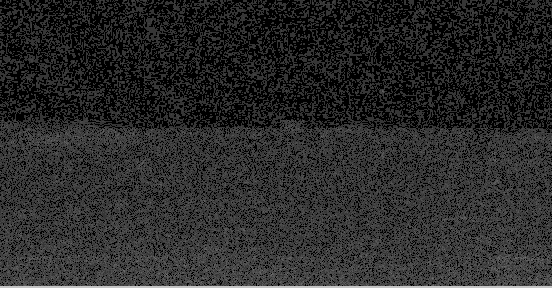
You can see that at 20% the amount of pixels altered represents a large percentage of the image and that even with the minimum compression many pixels were altered.
JPEG compression always loses quality, regardless of the original format, the only time that doesn't happen is when the original is already a JPEG image and the software used is capable of reproducing the original compression level. But that's in theory.
originally posted by: JamesChessman
Guys, here let me summarize the conversation. People are jumping in, and don't even seem to realize what exactly the main conversation is. No offense to anyone. But let's just get on-track re: what we're discussing.
The main conversation changes according to what is posted, so it's no surprise people are not exactly on topic when they post a couple of days later.
See how this is not a general conversation about general principles of image compression.
Knowing how compression works helps understand the situation.
This is why did one specific website link another specific site as its image source, but now, the images don't match.
Now? Did you confirm that the images were the same when you first saw them?
a reply to: ArMaP
Ok thank you for the input.
I appreciate that you're seemingly keeping an open mind what happened between these 2 Moon Hut images we're discussing.
We can't just jump to conclusions and I appreciate that we're not doing that.
Thanks. I had wondered if file-types couldn't just be changed to JPG WITHOUT compression involved... but I guess not. You seem to be clarifying that JPG absolutely requires compression and artifacts.
However, this is again quoted from NASA, from their website of Mars Rover Raw Images... in JPG format:
Alright, so as unfamiliar as I am with everything. There is NASA seemingly validating the potential of JPG as much as possible, in that it can be "essentially lossless."
So my familiarity is limited to this, so I believe you that JPG automatically involves compression & artifacts, meanwhile I also understand that NASA embraces the format's potential to be "essentially lossless," which seems essentially not suffering degradation.
I assume this means that it's so absolutely minimal that it essentially becomes non-existent, probably in that it doesn't show up, in the intended range of the images' viewing resolution. That's how I'm piecing it together as a layman, learning about everything.
^Thanks, I think you're referring to NASA's Mars Rover Raw Images, "essentially lossless," in JPG format. Interesting and I can't really comment much more about it.
But I can say that NASA's "lossless" JPG format usage, for their Raw Images from Mars: It seems to be validating that JPG can be used without "essentially" degrading the image, however NASA considers that standard for themselves...
And so getting back to the lunar Mystery Hut images, I think it's safe to say that: If the original PNG just need to be converted to JPG: I think NASA's "lossless" use of JPG... suggests that the most-optimal usage could have converted it without adding giant artifacts to the background. Could have done it without artifacts, I think, since NASA is at least using JPG losslessly.
But anyway, we have these 2 images to wonder about their discrepancy. The JPG is supposedly sourced from the PNG, which lacks background artifacts.
Yes it could have been from the JPG conversion, but JPG conversion also didn't NEED to badly degrade it like that, so basically it would have been a BAD jpg conversion, not just a general conversion but a lame conversion that added huge artifacts.
It's also simply possible that the Chinese site changed their own image, there's nothing impossible about a website having its image changed.
The idea of space.com destroying the image with JPG artifacts is pretty damning against space.com. Or they really got that image from the Chinese site and then that site simply changed its image, at least we can apparently narrow down the explanations to these 2 ideas, apparently.
The giant JPG with background imagery:

The Chinese website's wittle tiny PNG:

Ok thank you for the input.
I appreciate that you're seemingly keeping an open mind what happened between these 2 Moon Hut images we're discussing.
We can't just jump to conclusions and I appreciate that we're not doing that.
I see I wasn't clear about it on my previous post, JPEG compression always creates artefacts.
Thanks. I had wondered if file-types couldn't just be changed to JPG WITHOUT compression involved... but I guess not. You seem to be clarifying that JPG absolutely requires compression and artifacts.
However, this is again quoted from NASA, from their website of Mars Rover Raw Images... in JPG format:
The amount of JPEG compression can be changed from essentially lossless to very lossy.
Alright, so as unfamiliar as I am with everything. There is NASA seemingly validating the potential of JPG as much as possible, in that it can be "essentially lossless."
So my familiarity is limited to this, so I believe you that JPG automatically involves compression & artifacts, meanwhile I also understand that NASA embraces the format's potential to be "essentially lossless," which seems essentially not suffering degradation.
I assume this means that it's so absolutely minimal that it essentially becomes non-existent, probably in that it doesn't show up, in the intended range of the images' viewing resolution. That's how I'm piecing it together as a layman, learning about everything.
JPEG compression always loses quality, regardless of the original format, the only time that doesn't happen is when the original is already a JPEG image and the software used is capable of reproducing the original compression level. But that's in theory.
^Thanks, I think you're referring to NASA's Mars Rover Raw Images, "essentially lossless," in JPG format. Interesting and I can't really comment much more about it.
But I can say that NASA's "lossless" JPG format usage, for their Raw Images from Mars: It seems to be validating that JPG can be used without "essentially" degrading the image, however NASA considers that standard for themselves...
And so getting back to the lunar Mystery Hut images, I think it's safe to say that: If the original PNG just need to be converted to JPG: I think NASA's "lossless" use of JPG... suggests that the most-optimal usage could have converted it without adding giant artifacts to the background. Could have done it without artifacts, I think, since NASA is at least using JPG losslessly.
But anyway, we have these 2 images to wonder about their discrepancy. The JPG is supposedly sourced from the PNG, which lacks background artifacts.
Yes it could have been from the JPG conversion, but JPG conversion also didn't NEED to badly degrade it like that, so basically it would have been a BAD jpg conversion, not just a general conversion but a lame conversion that added huge artifacts.
It's also simply possible that the Chinese site changed their own image, there's nothing impossible about a website having its image changed.
The idea of space.com destroying the image with JPG artifacts is pretty damning against space.com. Or they really got that image from the Chinese site and then that site simply changed its image, at least we can apparently narrow down the explanations to these 2 ideas, apparently.
The giant JPG with background imagery:

The Chinese website's wittle tiny PNG:

a reply to: ArMaP
No, I had not looked into the Chinese website, when I made the thread. I had researched thoroughly, but limited to the Western language internet.
And also, just a lot of image-searching for the best version images of the Mystery Hut, and I had believed the best versions to be at space.com.
I just saw the Chinese site briefly, when I was researching everything.
I basically just saw the fact that space.com linked to the Chinese space agency's website as its source, and that was it.
So no, I had never looked closely at the image at the Chinese website.
It's only been noticed NOW, i.e. in the last few days, pointed out by MissVocalcord, that there's this discrepancy between versions of the image on space.com and the linked Chinese site.
Up to now, I've been expecting that space.com was using an accurate image from the Chinese space agency, regardless the details of the format type etc., I've been trusting that space.com and the web in general, must have had accurate images from the Chinese space agency.
So that means basically that I assumed the image looked the same, but now we're seeing that it doesn't. Now this is the discrepancy to figure out.
Well maybe it was some terrible JPG compression, what a disappointing explanation that would be, for the background imagery that I was initially so excited about. But we don't know yet, for sure, if that's definitely the case, or not.
Now? Did you confirm that the images were the same when you first saw them?
No, I had not looked into the Chinese website, when I made the thread. I had researched thoroughly, but limited to the Western language internet.
And also, just a lot of image-searching for the best version images of the Mystery Hut, and I had believed the best versions to be at space.com.
I just saw the Chinese site briefly, when I was researching everything.
I basically just saw the fact that space.com linked to the Chinese space agency's website as its source, and that was it.
So no, I had never looked closely at the image at the Chinese website.
It's only been noticed NOW, i.e. in the last few days, pointed out by MissVocalcord, that there's this discrepancy between versions of the image on space.com and the linked Chinese site.
Up to now, I've been expecting that space.com was using an accurate image from the Chinese space agency, regardless the details of the format type etc., I've been trusting that space.com and the web in general, must have had accurate images from the Chinese space agency.
So that means basically that I assumed the image looked the same, but now we're seeing that it doesn't. Now this is the discrepancy to figure out.
Well maybe it was some terrible JPG compression, what a disappointing explanation that would be, for the background imagery that I was initially so excited about. But we don't know yet, for sure, if that's definitely the case, or not.
originally posted by: JamesChessman
Well maybe it was some terrible JPG compression, what a disappointing explanation that would be, for the background imagery that I was initially so excited about. But we don't know yet, for sure, if that's definitely the case, or not.
It is a JPG compression artifact; everybody with a bit of understanding has been trying to explain that to you from the beginning of this thread; you are the only one thinking otherwise; seemingly based on a lack of knowledge and understanding.
Stuff like this:
^So that just established recently, in that other thread, that JPG format can be used as "essentially lossless."
Alright so NASA is using "essentially lossless" JPG format, which seemingly validates the format.
No it hasn't been established recently; This is known information for years by people using it.
No NASA isn't necessary using "essentially lossless" JPG ; read the thread back; read the linked articles; get wiser.
And yes space.com does edit and compress the images they use from their source sites; you could have easily checked that yourself.
originally posted by: JamesChessman
Did the "original" at space.com, the giant jpg (2198 x 1143 pixels): Did that image really come from the little tiny png which is currently embedded as the "original" on the Chinese site. A wittle tiny baby png of 552 x 288 pixels.
Based on my knowledge of how the different image formats work and my own personal experience of analysing thousands of images, both at work and as a hobby, I think that's exactly what happened.
To see if it was possible, I took the PNG from the Chinese site and saved as a JPG in GIMP, with the quality setting at 60%, and this is what I got:
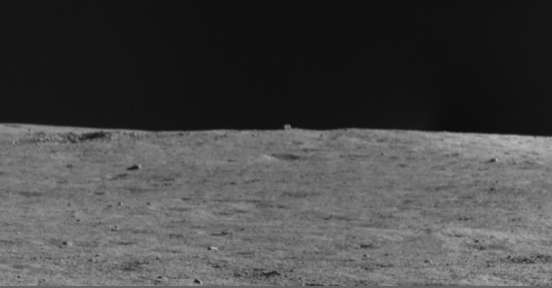
Then I resized it to the size of the JPG in Space.com and got this:
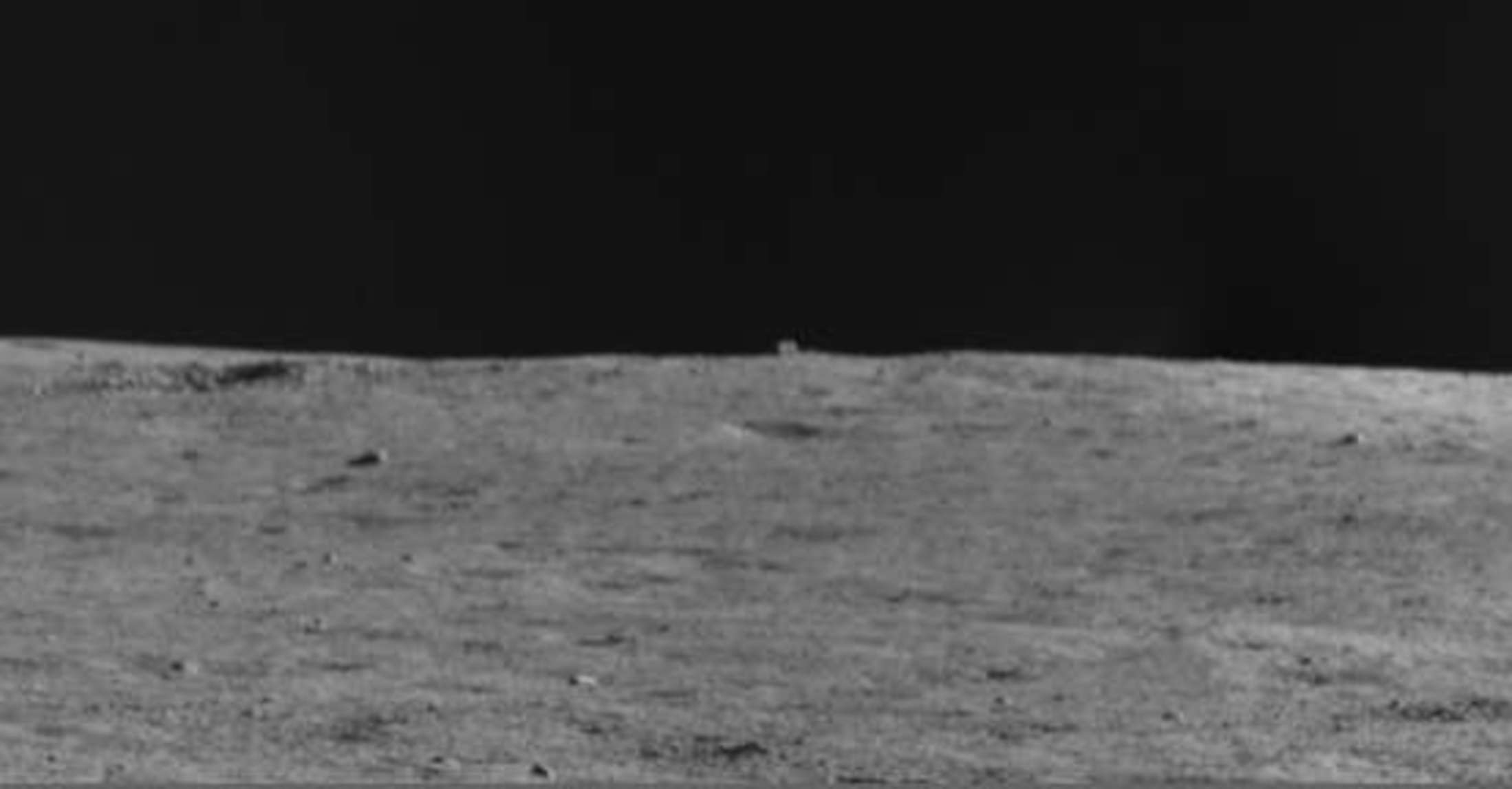
And changing the levels to make the artefacts more visible I got this:

Although that are some differences (obviously, I would need to know exactly what was done and what software was used, as different programs use different JPG algorithms) we can see a similar result, with the background all full of artefacts.
So we're not talking general principles of anything lol. I appreciate the input but it was input that seemed jumping in and losing sight of what the real conversation was.
The general principles are what makes us understand what probably happened.
The giant jpg from space.com: 2198 x 1143: weighs in at: 110,065 bytes (111 KB on disk).
Now let's check the tiny png at China's site. It weighs in at: drumroll: 62,668 bytes (66 KB on disk).
Alright guys? We can't really get more crystal-clear than this lol re: Clarifying the main conversation.
You forgot to mention the size of the PNG, 552 x 288, almost 4 times smaller in each dimension and, as a consequence, almost 16 times less pixels than the space.com image. That's why higher compression is useful.
originally posted by: JamesChessman
originally posted by: jedi_hamster
a reply to: MissVocalcord
...started from the fact that the damn "photo" is actually a frame from a heavily compressed video, which is why the resolution is crap and it's full of compression artifacts.
You actually don't know if that's true, hence your statements are false.
yes i do, and i've posted links here long time ago already. it's a screenshot of a paused video stream. since it's a video stream sent directly from the moon, it's heavily compressed and of poor quality. actual photos look MUCH better, as everyone here knows.
you've just elected to ignore that FACT from the very beginning, for the purpose of dragging this BS of a thread ad infinitum since you're unable to admit that you were actually wrong all along.
never in my life did i see someone as immune to knowledge as you. to top it off, your whole logic is basically "i refuse to accept the evidence you present, hence I AM RIGHT, REEEEEEEEEEEEEE". pathetic.
originally posted by: JamesChessman
So what can I say. It's NASA's current image format in 2022, for their raw images uploaded to the web from their various rovers etc. They are using jpg format.
They are not limited to the JPG format, they can take images with a lossless compression when they want, they are not stupid.
Then we have the most beautiful model in the world also choosing jpg format for seemingly all of her modern content, too: Hi-res photos that you can see her pores, the glitter in her make-up and lipstick, you can see her strands of hair.
Professional photographers use lossless compression for their raw images, the published images are usually converted to JPG or PNG after the post-production. And do not confuse high resolution with compression, they are different things.
They are two sources that I would expect to RESPECT their own work enough to use a suitable image format and not destroy their own work. I mean what are we talking about, assuming that ALL jpg images are badly compromised, while it's NASA format of choice lol and the most beautiful model in the world, too, haha.
You are basing all this in your ignorance of how things work. JPEG always creates artefacts but your assumption that "ALL jpg images are badly compromised" is wrong, it depends on the compression level used.
originally posted by: JamesChessman
So then the proposal is that the tiny png was... downloaded and compressed to hell with added artifacts, while converted to JPG format.
Not "converted to hell", just converted, it could be much worse.
Guys you're saying they felt the need to compress that little tiny baby png. 66 KB.
They compressed it to hell and then blew it up to a JPG that's basically twice its size, 111 KB.
We don't know if they "felt the need" to compress the image, maybe they have an automated process that converts all images to JPEG, only the people at space.com (or the ones doing that work for them) know what happened.
Also, the file size is twice the size of the original file but it has almost 16 times as much pixels as the original.
In other words, they shrank it and degraded it visibly just to blow it up twice its file size, that's a strange sequence of events.
They shrunk it to make it bigger. Come on.
You are looking at file size when you should be looking at image size.
The JPG image is almost 4 times as wide and 4 times as high as the original.
Plus why not just use the "original" baby png image, why not copy it exactly, they didn't save file size, they doubled the file size.
If they wanted a bigger image (not in file size), compressing it makes sense. Or it's an automated process, only they know.
originally posted by: JamesChessman
However, if the consensus is that NASA is NOT destroying their Mars rover raw images, in JPG format:
Then why in the world are we going to assume that others, like space.com are going to destroy images in a uniquely bad way, just because JPG format, but meanwhile NASA is using JPG format without that same image-degradation.
You have the wrong assumption that all JPG compression "destroys" images (did you notice that you are the only one saying that?), when in fact it depends on the compression level.
See what happens to your avatar at different compression levels.
Original, a PNG image that was converted from a JPG image (we can see the artefacts when we increase the light levels)
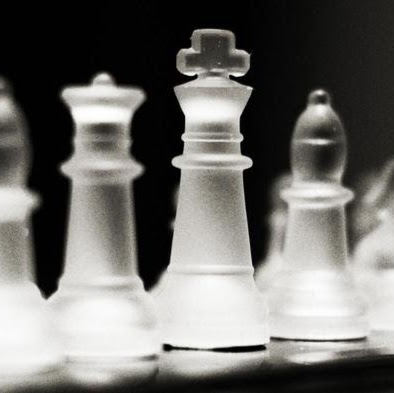
JPG with 90% quality.

80%
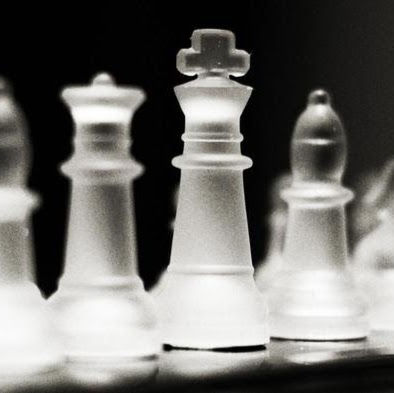
70%
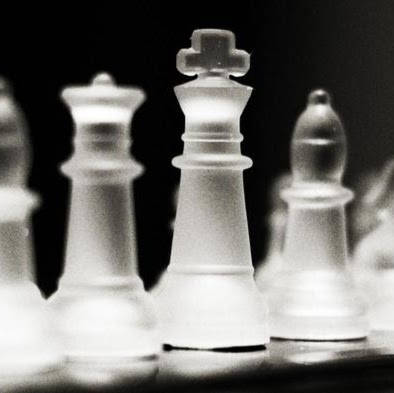
60%
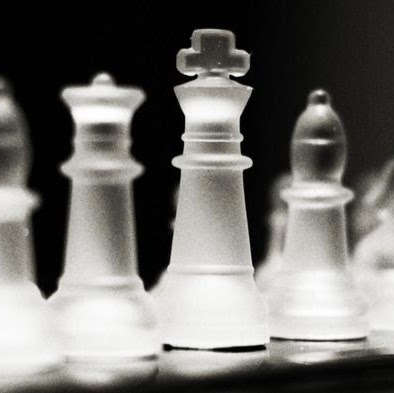
50%
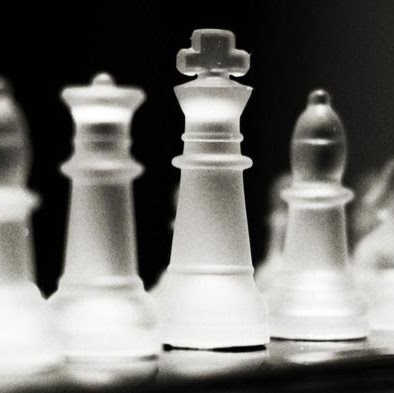
40%

30%

20%
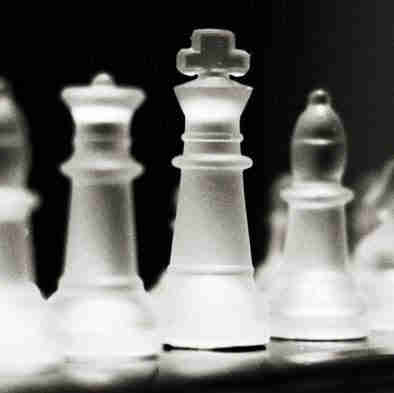
10%

0%
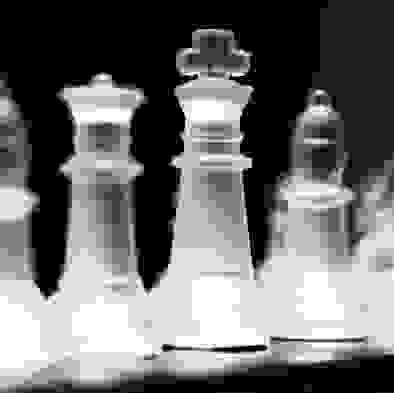
As you can see, the image at higher quality levels is perfectly acceptable, it was not "destroyed" by being converted to JPEG.
Now, why is NASA using JPG now? Probably because most of the images are colour images, unlike in previous versions, when the cameras took only greyscale photos at different wavelengths that had to be joined to get a colour image. Colour images have more data (usually 3 bytes per pixel against the 1 byte per pixel for greyscale images), so without extra compression those images would need roughly 3 times as much time to be uploaded back to Earth than a same size greyscale image.
The same thing happens with video, although they have the capability of making videos they rarely used it, as it uses a lot of storage space and takes a lot of time to send back to Earth (and while they are sending it they cannot send anything else).
They also have the possibility of taking photos without any compression or with lossless compression, if they see something they think needs a better image for further analysis, so they are not limited to JPG images.
Another thing to consider is that image compression needs some processing work, while an uncompressed image is just stored as it came from the camera sensor, so it made sense to use uncompressed images when the computers on the rovers/satellites were not as powerful as they are today.
PS: all processing is being done in GIMP, as it is a good program and is free (and open source), so anyone can try for themselves.
originally posted by: JamesChessman
Just a few days after the other thread validated JPG format as capable of being "essentially lossless," a few days later people are assuming terrible JPG degradation with these Moon Hut images.
Not "terrible JPG degradation", what we see is normal JPG degradation.
Then we had a mod posting general info about compression, which isn't really relevant to anything, we're discussing 2 specific images, not just general info, haha.
It's relevant, the fact that you cannot understand why is your problem.
The fact is that the two images don't match, but the Chinese site could have just changed their image. That's at least just as possible as the assumptions about space.com destroying the image.
To me, it's less likely that the Chinese site changed the image (why would they?) than space.com having converted the image from the original on the Chinese site.
Personally, space.com is not a site I trust.
originally posted by: JamesChessman
^Thanks, I think you're referring to NASA's Mars Rover Raw Images, "essentially lossless," in JPG format. Interesting and I can't really comment much more about it.
No, I'm talking about JPEG images in general.
But I can say that NASA's "lossless" JPG format usage, for their Raw Images from Mars: It seems to be validating that JPG can be used without "essentially" degrading the image, however NASA considers that standard for themselves...
There's no such thing as lossless JPG.
And so getting back to the lunar Mystery Hut images, I think it's safe to say that: If the original PNG just need to be converted to JPG: I think NASA's "lossless" use of JPG... suggests that the most-optimal usage could have converted it without adding giant artifacts to the background. Could have done it without artifacts, I think, since NASA is at least using JPG losslessly.
Less compression results in less artefacts, more compression in more artefacts.
Yes it could have been from the JPG conversion, but JPG conversion also didn't NEED to badly degrade it like that, so basically it would have been a BAD jpg conversion, not just a general conversion but a lame conversion that added huge artifacts.
Maybe the people that did the processing weren't interested in the almost completely black background, as that's not the "main attraction" of the image.
It's also simply possible that the Chinese site changed their own image, there's nothing impossible about a website having its image changed.
Possible, not likely.
The idea of space.com destroying the image with JPG artifacts is pretty damning against space.com. Or they really got that image from the Chinese site and then that site simply changed its image, at least we can apparently narrow down the explanations to these 2 ideas, apparently.
They didn't "destroy" it. When you look at the ground, do you see any difference in image quality? That's probably what they were focusing on.
One thing I forgot (several times) to mention, I too can see the artefacts on the background on that space.com image without changing the
brightness/contrast/gamma.
a reply to: MissVocalcord
Well it was never proven, it was only a possibility that people mentioned, from the beginning of the thread.
Even now it's not 100% proven yet. I'm still wondering if the Chinese site just swapped their image lol, though otherwise the image discrepancy does look like it verifies the explanation of JPG artifacts, IF that little PNG was really the original source image for the rest of the internet, publishing the version with the background imagery...
And re: The newly-noticed little PNG at China's website:
I acknowledged all along that I stuck to the English-language internet in my research, so the Chinese site was literally out of my scope.
My image-searching was probably across language barriers, I'd expect... but for actual text, I did stick to the English half of the world wide web.
So my researching any written articles on the topic, wouldn't bring me to the Chinese-lang. site (given that I was sticking with English lang. websites).
And likewise, my image-searching wouldn't bring me to the little tiny PNG at China's website, because the way I was image-searching, I was looking for the best-quality, and largest, images of the Mystery Hut object.
So we're now discussing the tiny wittle baby PNG: This is so small that it was completely out of my scope, I was looking for the biggest, highest-res version images of the Mystery Hut object, and I had settled on space.com as seemingly having the best, biggest, highest-res versions of the images.
And what can I say.
Apparently I overly trusted space.com, and overly trusted the Chinese space agency, if this all really boils down to everyone poorly managing their images in the first place.
If this is really it, then it's just disgusting, and yeah I overly trusted everyone to respect and preserve the lunar imagery that they were reporting on.
What are you saying. I just quoted you, quoting NASA:
From your larger quote from NASA:
Yes, I overly trusted the professionals who are actually doing the work that I was researching.
I should have wondered if news headlines celebrating China's lunar rover photography, were actually using severely degraded images from awful JPG compression, from China publishing a little tiny PNG image, which didn't need to be in such a baby form... nor did it need to be converted to JPG, and even if it did, then it didn't need to destroy it so badly in that process. And once degraded to hell with JPG artifacts, then it shouldn't have been used. Everyone could have just saved the same exact baby PNG, and published the same exact PNG. There was no need for anyone to do anything with it.
I downloaded it and embedded it here in the thread multiple times already. In the same original PNG form. The whole internet could have done that, without converting to JPG, without degrading it and adding compression artifacts, etc. It's all so completely unnecessary and pointless that any of that happened, even if that is really what happened, it's all just absurd.
It is a JPG compression artifact; everybody with a bit of understanding has been trying to explain that to you from the beginning of this thread; you are the only one thinking otherwise; seemingly based on a lack of knowledge and understanding.
Well it was never proven, it was only a possibility that people mentioned, from the beginning of the thread.
Even now it's not 100% proven yet. I'm still wondering if the Chinese site just swapped their image lol, though otherwise the image discrepancy does look like it verifies the explanation of JPG artifacts, IF that little PNG was really the original source image for the rest of the internet, publishing the version with the background imagery...
And re: The newly-noticed little PNG at China's website:
I acknowledged all along that I stuck to the English-language internet in my research, so the Chinese site was literally out of my scope.
My image-searching was probably across language barriers, I'd expect... but for actual text, I did stick to the English half of the world wide web.
So my researching any written articles on the topic, wouldn't bring me to the Chinese-lang. site (given that I was sticking with English lang. websites).
And likewise, my image-searching wouldn't bring me to the little tiny PNG at China's website, because the way I was image-searching, I was looking for the best-quality, and largest, images of the Mystery Hut object.
So we're now discussing the tiny wittle baby PNG: This is so small that it was completely out of my scope, I was looking for the biggest, highest-res version images of the Mystery Hut object, and I had settled on space.com as seemingly having the best, biggest, highest-res versions of the images.
And what can I say.
Apparently I overly trusted space.com, and overly trusted the Chinese space agency, if this all really boils down to everyone poorly managing their images in the first place.
If this is really it, then it's just disgusting, and yeah I overly trusted everyone to respect and preserve the lunar imagery that they were reporting on.
No it hasn't been established recently; This is known information for years by people using it.
No NASA isn't necessary using "essentially lossless" JPG ; read the thread back; read the linked articles; get wiser.
What are you saying. I just quoted you, quoting NASA:
The amount of JPEG compression can be changed from essentially lossless to very lossy.
From your larger quote from NASA:
The MAHLI is capable of producing images of three formats: raw (no RGB interpolation, no compression), lossless predictive compression (no RGB interpolation, approximately 1.7:1 compression), and JPEG (with interpolated color). The amount of JPEG compression can be changed from essentially lossless to very lossy. Operationally, most images will be returned as JPEGs because of their lower data volume. The compression factor is commanded from the ground and implemented as the image is acquired.
And yes space.com does edit and compress the images they use from their source sites; you could have easily checked that yourself.
Yes, I overly trusted the professionals who are actually doing the work that I was researching.
I should have wondered if news headlines celebrating China's lunar rover photography, were actually using severely degraded images from awful JPG compression, from China publishing a little tiny PNG image, which didn't need to be in such a baby form... nor did it need to be converted to JPG, and even if it did, then it didn't need to destroy it so badly in that process. And once degraded to hell with JPG artifacts, then it shouldn't have been used. Everyone could have just saved the same exact baby PNG, and published the same exact PNG. There was no need for anyone to do anything with it.
I downloaded it and embedded it here in the thread multiple times already. In the same original PNG form. The whole internet could have done that, without converting to JPG, without degrading it and adding compression artifacts, etc. It's all so completely unnecessary and pointless that any of that happened, even if that is really what happened, it's all just absurd.
originally posted by: ArMaP
originally posted by: JamesChessman
Did the "original" at space.com, the giant jpg (2198 x 1143 pixels): Did that image really come from the little tiny png which is currently embedded as the "original" on the Chinese site. A wittle tiny baby png of 552 x 288 pixels.
Based on my knowledge of how the different image formats work and my own personal experience of analysing thousands of images, both at work and as a hobby, I think that's exactly what happened.
To see if it was possible, I took the PNG from the Chinese site and saved as a JPG in GIMP, with the quality setting at 60%, and this is what I got:
Then I resized it to the size of the JPG in Space.com and got this:
And changing the levels to make the artefacts more visible I got this:
Although that are some differences (obviously, I would need to know exactly what was done and what software was used, as different programs use different JPG algorithms) we can see a similar result, with the background all full of artefacts.
So we're not talking general principles of anything lol. I appreciate the input but it was input that seemed jumping in and losing sight of what the real conversation was.
The general principles are what makes us understand what probably happened.
The giant jpg from space.com: 2198 x 1143: weighs in at: 110,065 bytes (111 KB on disk).
Now let's check the tiny png at China's site. It weighs in at: drumroll: 62,668 bytes (66 KB on disk).
Alright guys? We can't really get more crystal-clear than this lol re: Clarifying the main conversation.
You forgot to mention the size of the PNG, 552 x 288, almost 4 times smaller in each dimension and, as a consequence, almost 16 times less pixels than the space.com image. That's why higher compression is useful.
Thanks, I acknowledged that yes, the newly-found tiny PNG image, presented as the source original, makes it look like that is what happened (if it's really the same source image that was really used by space.com and everyone else).
I appreciate showing off the process of creating JPG artifacts for the small image. I did expect that this newly-found small PNG, it can probably be rendered into a similar version as space.com's JPG version with background imagery.
I mean, whether the PNG is really the source image of everything, OR if it might have been swapped, either way, I expect the current small PNG lines up exactly with the JPG artifacts explanation.
You forgot to mention the size of the PNG, 552 x 288, almost 4 times smaller in each dimension and, as a consequence, almost 16 times less pixels than the space.com image. That's why higher compression is useful.
I didn't "forget" to mention it because I had just recently mentioned it already haha. Including you quoting me, saying its size, at top of your same post.
Anyway, OK the PNG is 16 times less pixels.
After describing the tiny, tiny PNG, next you said, "that's why higher compression is useful."
Do you mean for space.com, are you saying that compression of their JPG version is useful, because it's so big. If so, then I get that.
Although I pointed out earlier that space.com's version was still twice the file size of the PNG... But OK it's not 16x the file-size, while it is 16x bigger, so yeah I get that they saved file size in that sense, apparently...
Not that I will condone anyone ruining the image with JPG artifacts in the background, if that really is the explanation for everything. There's no excuse for destroying the integrity of the content being reported, for goodness sake...
And if that baby PNG was really the source image that everyone used, then the PNG small size and low-resolution is pretty damn lacking, in and of itself... and its small size and low res probably contributed to the mess seen in the JPG version that came next, and then used across the internet...
edit on 7-5-2022 by JamesChessman because: (no reason given)
a reply to: JamesChessman
So…..are you going to conclude to yourself that there are ..No….Secret Buildings in Background of the Photo……as suggested by the last half of what your thread title states?
👽🛸🍸
So…..are you going to conclude to yourself that there are ..No….Secret Buildings in Background of the Photo……as suggested by the last half of what your thread title states?
👽🛸🍸
originally posted by: Ophiuchus1
a reply to: JamesChessman
So…..are you going to conclude to yourself that there are ..No….Secret Buildings in Background of the Photo……as suggested by the last half of what your thread title states?
👽🛸🍸
Guys I'm a chess man. Look at the chessboard and that's what it is.
It's not 100% established yet, if the wittle baby PNG is legit the source image of the entire internet, publishing a different version that everyone ran with. That's possible, but that's an absurd sequence of events, that involves basically everybody disrespecting the source material that they were publishing. Including the Chinese space agency disrespecting their own content too, just to publish their own breaking image as that tiny PNG, apparently, and then to watch the world go nuts over a wrongly-degraded version of it.
So yeah it's all perfectly possible, the unbelievable part is the lacking element of professionalism, and the lacking respect for the actual lunar imagery. Which is basically what I've been saying all along.
It would be nice to email the staff at space.com and see what their response would be. If they'd acknowledge that they basically took the small PNG from China, and did the JPG conversion which added background artifacts, and blew that up, and it became the most common image online. It'd be nice to see if they'd verify that sequence of events.
Also: It would be nice to glance at the waybackmachine and see if we could verify that the Chinese site really did have the small PNG all this time, as the apparent source of everything...
I think it's still worth wondering if China just swapped the image at their website, maybe they didn't like all the attention on the background stuff, it certainly is easy to change a picture on a website.
So there remains at least a little bit that we could hopefully verify better.
originally posted by: JamesChessman
So we're now discussing the tiny wittle baby PNG: This is so small that it was completely out of my scope, I was looking for the biggest, highest-res version images of the Mystery Hut object, and I had settled on space.com as seemingly having the best, biggest, highest-res versions of the images.
The biggest is not the same as the best, as you probably have noticed by now.

I should have wondered if news headlines celebrating China's lunar rover photography, were actually using severely degraded images from awful JPG compression, from China publishing a little tiny PNG image, which didn't need to be in such a baby form... nor did it need to be converted to JPG, and even if it did, then it didn't need to destroy it so badly in that process. And once degraded to hell with JPG artifacts, then it shouldn't have been used. Everyone could have just saved the same exact baby PNG, and published the same exact PNG. There was no need for anyone to do anything with it.
Do you know if the PNG image was published in it's original size? If that's the original size then they did the right thing, they published the best, highest resolution available.
I downloaded it and embedded it here in the thread multiple times already. In the same original PNG form. The whole internet could have done that, without converting to JPG, without degrading it and adding compression artifacts, etc. It's all so completely unnecessary and pointless that any of that happened, even if that is really what happened, it's all just absurd.
That's what I think about using videos to show photos, why resize and reencode the original images, making them look worse than the original?
new topics
-
Whom among you has returned from the dead?
Philosophy and Metaphysics: 3 hours ago -
US/UK elections- Predicting by parallels?
Political Issues: 6 hours ago -
remastered Apollo test flight(unmanned)
Space Exploration: 8 hours ago -
Craig McInley gets his amputation and accolades
General Conspiracies: 10 hours ago
top topics
-
Britain rejects the World Health Organisation Pandemic Treaty
New World Order: 13 hours ago, 12 flags -
Hundreds of People Stuck on Mount Everest
Mainstream News: 16 hours ago, 10 flags -
Man fined $600 for "body slamming" an Orca
Other Current Events: 12 hours ago, 9 flags -
Vladimir Putin Ready to 'Freeze' War in Ukraine With Ceasefire
World War Three: 13 hours ago, 9 flags -
Colonel Douglas MacGregor of US Army lays out the plain truth of the Ukraine Sham War...
New World Order: 14 hours ago, 7 flags -
Craig McInley gets his amputation and accolades
General Conspiracies: 10 hours ago, 7 flags -
“You’re Going To Get KILLED!” Mike Benz EXPOSES CIA Secrets Like NEVER Before
New World Order: 14 hours ago, 5 flags -
US/UK elections- Predicting by parallels?
Political Issues: 6 hours ago, 4 flags -
remastered Apollo test flight(unmanned)
Space Exploration: 8 hours ago, 3 flags -
Whom among you has returned from the dead?
Philosophy and Metaphysics: 3 hours ago, 1 flags
active topics
-
'Skeptics' Ridiculous Explanations Of The Rendlesham Forest Events
Aliens and UFOs • 50 • : Arbitrageur -
Vladimir Putin Ready to 'Freeze' War in Ukraine With Ceasefire
World War Three • 63 • : Tagz -
Biden administration authorized 'Use of Deadly Force' in Mar-a-Lago raid
US Political Madness • 225 • : Dandandat3 -
Mood Music Part VI
Music • 3282 • : underpass61 -
Killings of Palestinian children are soaring in the West Bank.
World War Three • 193 • : FlyersFan -
John Roberts has a big problem on his hands
US Political Madness • 98 • : NeedInfo -
I'm convinced...now more than ever
General Conspiracies • 183 • : ksihkahe -
Our recent trip to Ukraine (Kyiv)
Other Current Events • 32 • : BedevereTheWise -
“You’re Going To Get KILLED!” Mike Benz EXPOSES CIA Secrets Like NEVER Before
New World Order • 4 • : rdambroso -
War is coming in months not years Chicago
US Political Madness • 41 • : crayzeed
